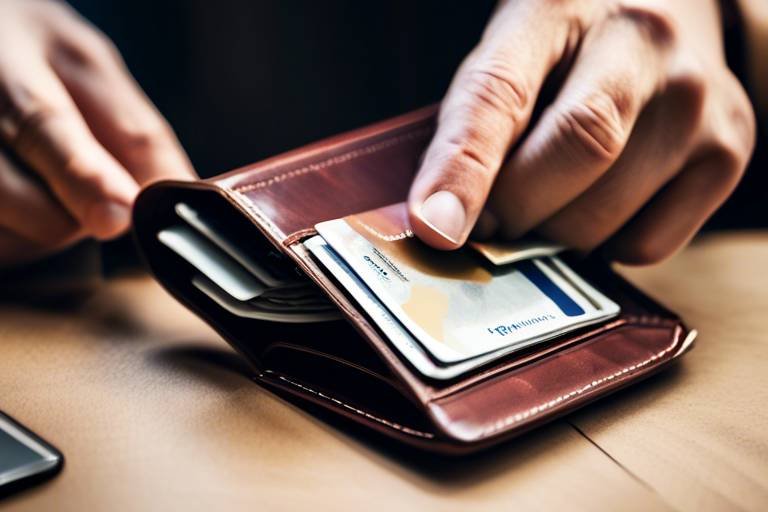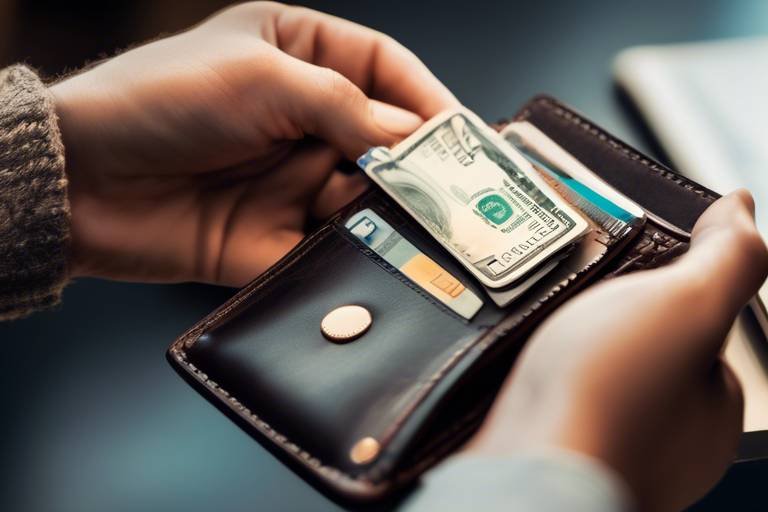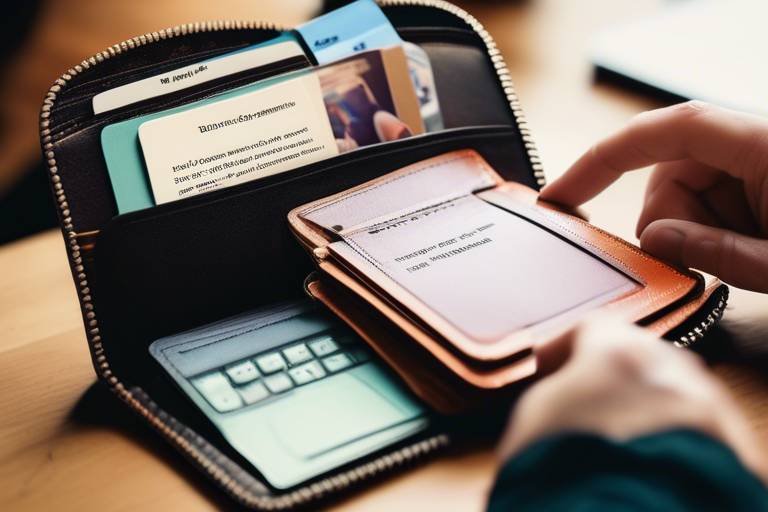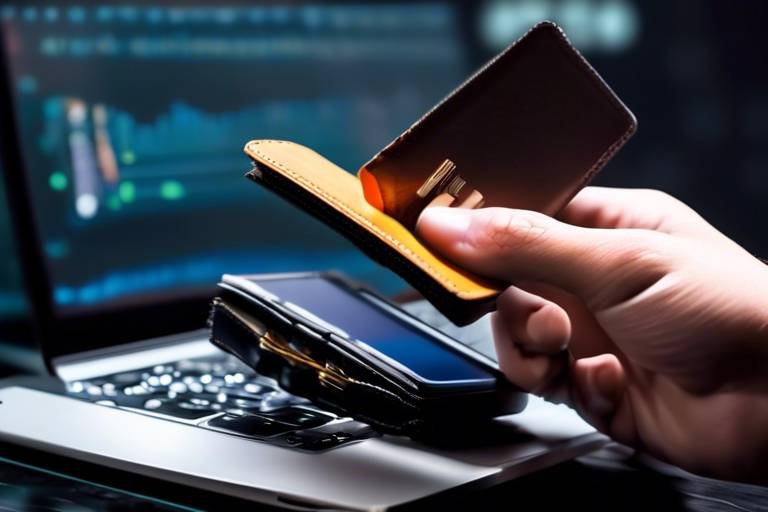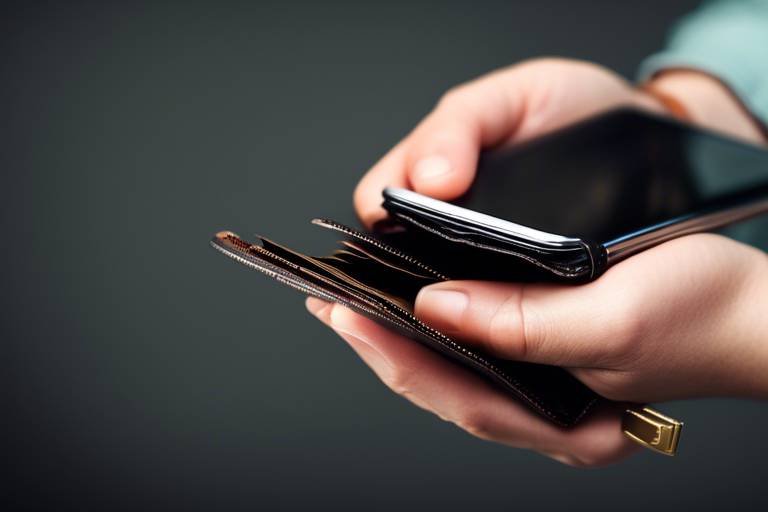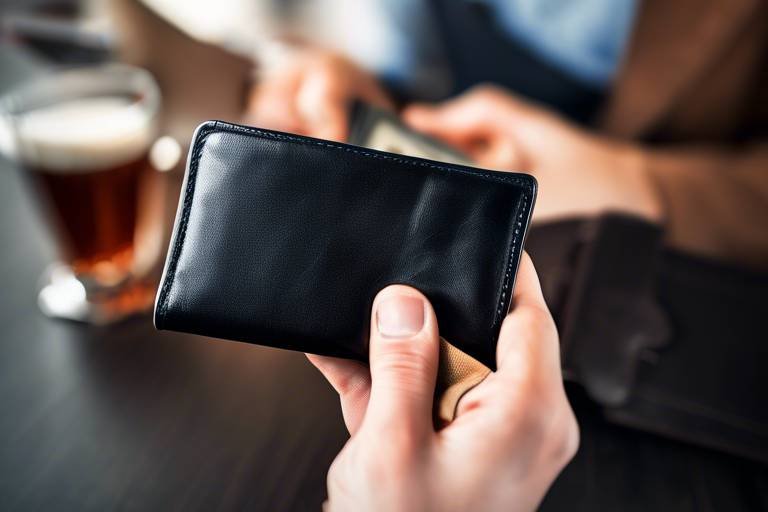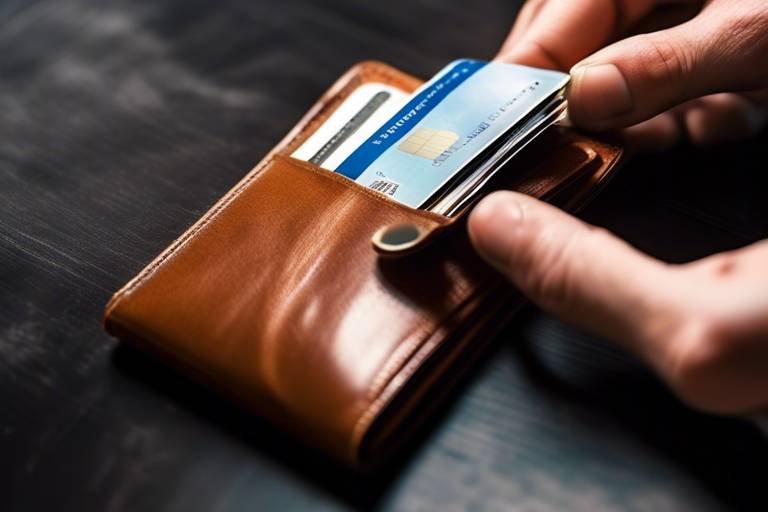The Impact of Wallet Design on User Adoption Rates
In the rapidly evolving digital landscape, the design of digital wallets plays a pivotal role in determining their adoption rates among users. As more individuals turn to digital solutions for their financial transactions, the importance of wallet design cannot be overstated. Think of a digital wallet as a storefront; if the window display is uninviting, potential customers will simply walk past. Similarly, a well-designed wallet not only attracts users but also encourages them to engage with it. This article delves into various factors that influence user adoption rates, including usability, aesthetics, security features, and more, ultimately painting a comprehensive picture of what makes a digital wallet successful in today’s market.
The design's usability plays a crucial role in user adoption. Imagine trying to navigate a maze without a map; frustrating, right? A seamless user experience can significantly enhance user satisfaction and encourage more individuals to adopt a digital wallet. Users want a wallet that is easy to understand and navigate, allowing them to perform transactions without unnecessary hassle. Features like intuitive navigation, clear labeling, and responsive design are key. For instance, a wallet that offers a straightforward setup process and easy access to essential features tends to attract more users. According to recent studies, wallets with high usability scores see a 30% increase in user retention compared to those with complicated interfaces.
The visual design of a wallet can attract users. Think about the last time you chose a product based solely on its looks. Aesthetically pleasing interfaces may lead to higher adoption rates as users are more likely to engage with visually appealing products. Color schemes, typography, and layout all contribute to a wallet's aesthetic appeal. A well-crafted design can evoke feelings of trust and professionalism, making users feel more comfortable with their transactions. In fact, surveys show that over 70% of users prefer wallets that are visually attractive. This is why many successful wallets invest heavily in their graphic design and user interface.
Security is paramount in wallet design. Users prioritize safety, and wallets that effectively communicate their security measures can foster trust and lead to increased adoption rates. Imagine handing over your hard-earned money to a stranger—it's a scary thought! Digital wallets must reassure users that their information is safe. This can be achieved through features like two-factor authentication, biometric security, and transparent privacy policies. A wallet that proudly showcases its security features, perhaps through informative pop-ups or user-friendly guides, can significantly enhance user confidence. In a world where data breaches are common, a wallet that prioritizes security can stand out in a crowded marketplace.
Offering customization options can enhance user engagement. Just like how we all have different tastes in fashion, users appreciate the ability to personalize their wallet experience. Wallets that allow users to tweak settings, themes, and notifications may see higher adoption rates due to increased user satisfaction and ownership. Customization fosters a sense of belonging and attachment, making users more likely to stick with a wallet that feels uniquely theirs. For example, a wallet that enables users to select their preferred color scheme or layout can create a more enjoyable experience, leading to a loyal user base.
Wallets that integrate seamlessly with other services provide added value. In today's fast-paced world, convenience is king. This convenience can significantly boost user adoption as individuals seek multifunctional solutions in their digital experiences. A wallet that allows users to pay bills, transfer money, and even earn rewards all in one place can be a game-changer. Moreover, integration with popular platforms like e-commerce websites or social media can enhance user engagement. Users are more likely to adopt a wallet that simplifies their online interactions, making their lives easier.
With the rise of mobile usage, wallet designs must prioritize mobile compatibility. A wallet that functions well on mobile devices can attract a broader user base and facilitate higher adoption rates. Think about it: how often do you use your phone for transactions? If a wallet is difficult to use on a mobile device, users will quickly lose interest. Responsive designs that adjust to various screen sizes, along with fast loading times, are essential for keeping users engaged. In fact, studies indicate that over 50% of digital wallet transactions occur on mobile devices, highlighting the need for mobile-first designs.
A strong brand reputation can influence user adoption. Wallets associated with reputable brands are often more trusted, leading to increased user confidence and willingness to adopt. Just as we tend to choose familiar brands when shopping, users are more likely to adopt wallets from companies they recognize and trust. Investing in brand reputation through customer service, transparency, and community engagement can pay off significantly. A wallet backed by a strong brand can see an increase in adoption rates simply because users feel safer choosing a known entity.
Providing adequate user education and support is essential. Wallets that offer comprehensive resources and assistance can enhance user understanding, leading to higher adoption rates among potential users. Imagine trying to use a new gadget without any instructions—frustrating, right? Offering tutorials, FAQs, and responsive customer support can make a world of difference. Users who feel supported are more likely to explore all the features a wallet offers, leading to a richer user experience and increased satisfaction.
Understanding current market trends and user preferences is vital. Wallet designs that align with evolving consumer demands are more likely to achieve successful adoption rates in a competitive landscape. Staying ahead of trends, such as the growing interest in cryptocurrency or contactless payments, can set a wallet apart from the competition. By continuously adapting to user needs and preferences, wallet providers can ensure they remain relevant and appealing to their target audience.
- What factors influence wallet adoption rates? Usability, aesthetics, security, customization, and integration with other services are key factors.
- How important is security in wallet design? Security is crucial; users prioritize safety and are more likely to adopt wallets that effectively communicate their security measures.
- Can customization options increase user engagement? Yes, allowing users to personalize their experience can lead to higher satisfaction and loyalty.
- Why is mobile compatibility important? With the rise of mobile usage, wallets must function well on mobile devices to attract a broader user base.
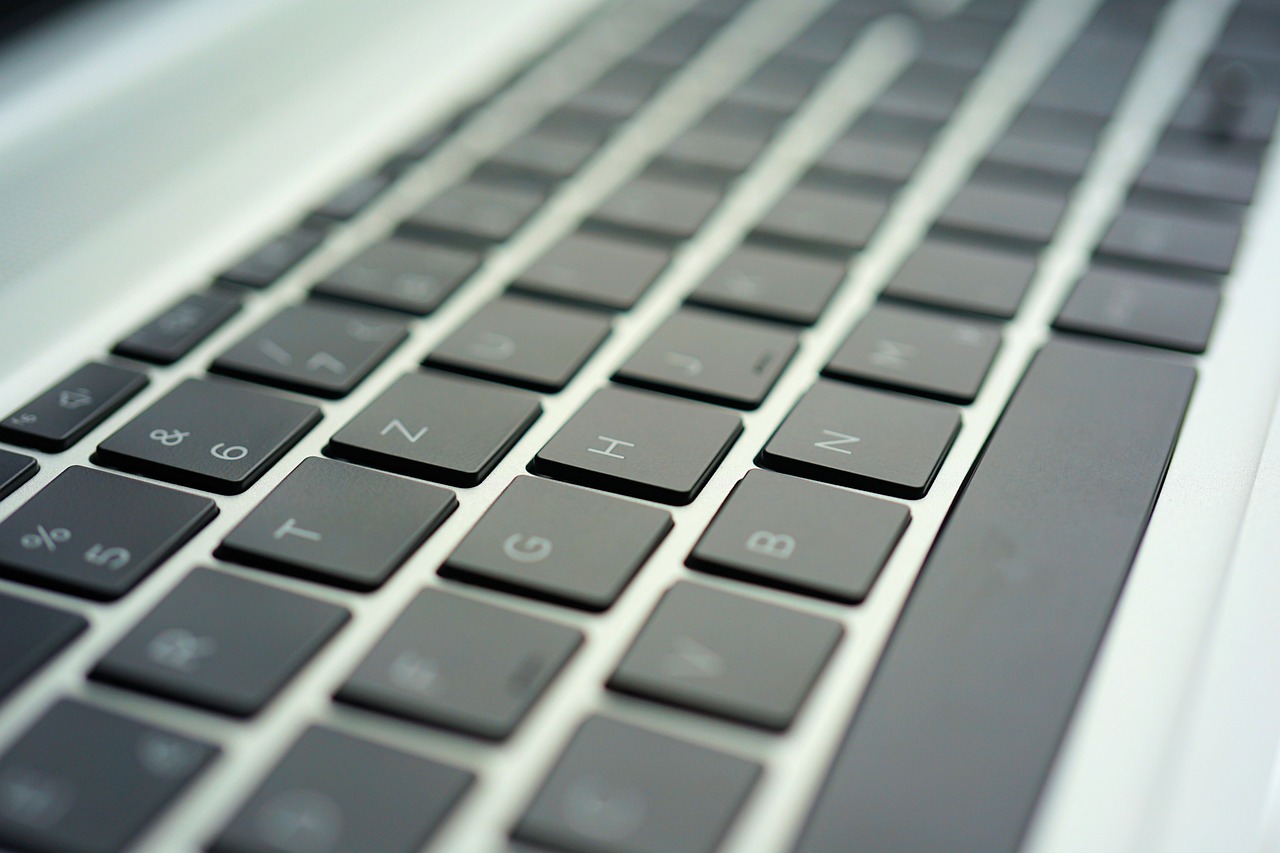
Usability and User Experience
This article explores how wallet design influences user adoption rates, examining factors such as usability, aesthetics, and security features that contribute to a successful wallet experience.
When it comes to digital wallets, usability is the name of the game. Imagine trying to navigate a maze blindfolded; that's what a poor user experience feels like. If the design is clunky or confusing, users will quickly abandon ship. A seamless user experience is not just a luxury; it's a necessity. Users should be able to perform basic tasks—like sending money, checking balances, or linking accounts—without feeling like they need a degree in computer science. A wallet that is intuitive and easy to navigate can significantly enhance user satisfaction, making it more likely for individuals to adopt this digital solution.
Consider the following key aspects that contribute to usability:
- Intuitive Navigation: Users should find it easy to locate features without excessive clicking or searching.
- Clear Instructions: Providing straightforward guidance can help users feel more confident in using the wallet.
- Responsive Design: A wallet that performs well across various devices—be it a smartphone, tablet, or desktop—ensures that users have a consistent experience.
Moreover, think about how frustrating it can be when a service is slow or crashes. Users expect speed and reliability. A wallet that loads quickly and processes transactions in real-time fosters a sense of trust and satisfaction. This is particularly important when users are making time-sensitive transactions, like splitting a dinner bill or paying for a ride. If they encounter delays, they may opt for a competitor's wallet instead.
Furthermore, incorporating feedback mechanisms can elevate the user experience. Allowing users to rate their experience or report issues directly within the app can help developers make necessary improvements. It's like having a conversation with your best friend—open, honest, and aimed at making things better. By actively engaging with users and addressing their concerns, wallet providers can create a loyal user base that feels heard and valued.
In conclusion, the usability and user experience of a digital wallet are paramount for driving adoption rates. A wallet that prioritizes intuitive design, speed, and user feedback is more likely to attract and retain users. As the digital landscape evolves, focusing on these elements will be crucial for wallet providers aiming to stand out in a crowded market.
The visual design of a wallet can attract users. Aesthetically pleasing interfaces may lead to higher adoption rates as users are more likely to engage with visually appealing products.
Security is paramount in wallet design. Users prioritize safety, and wallets that effectively communicate their security measures can foster trust and lead to increased adoption rates.
Offering customization options can enhance user engagement. Wallets that allow users to personalize their experience may see higher adoption rates due to increased user satisfaction and ownership.
Wallets that integrate seamlessly with other services provide added value. This convenience can significantly boost user adoption as individuals seek multifunctional solutions in their digital experiences.
With the rise of mobile usage, wallet designs must prioritize mobile compatibility. A wallet that functions well on mobile devices can attract a broader user base and facilitate higher adoption rates.
A strong brand reputation can influence user adoption. Wallets associated with reputable brands are often more trusted, leading to increased user confidence and willingness to adopt.
Providing adequate user education and support is essential. Wallets that offer comprehensive resources and assistance can enhance user understanding, leading to higher adoption rates among potential users.
Understanding current market trends and user preferences is vital. Wallet designs that align with evolving consumer demands are more likely to achieve successful adoption rates in a competitive landscape.
Q: What is the most important factor in wallet design for user adoption?
A: Usability is crucial; a seamless user experience can significantly enhance user satisfaction.
Q: How does aesthetic appeal influence user adoption?
A: Visually appealing wallets can attract users and encourage engagement, leading to higher adoption rates.
Q: What role does security play in wallet design?
A: Security is paramount; users prioritize safety and are more likely to adopt wallets that clearly communicate their security features.
Q: Can customization options affect user engagement?
A: Yes, wallets that allow users to personalize their experience may see higher adoption rates due to increased satisfaction.
Q: Why is mobile compatibility important?
A: With the rise of mobile usage, wallets that function well on mobile devices can attract a broader user base.
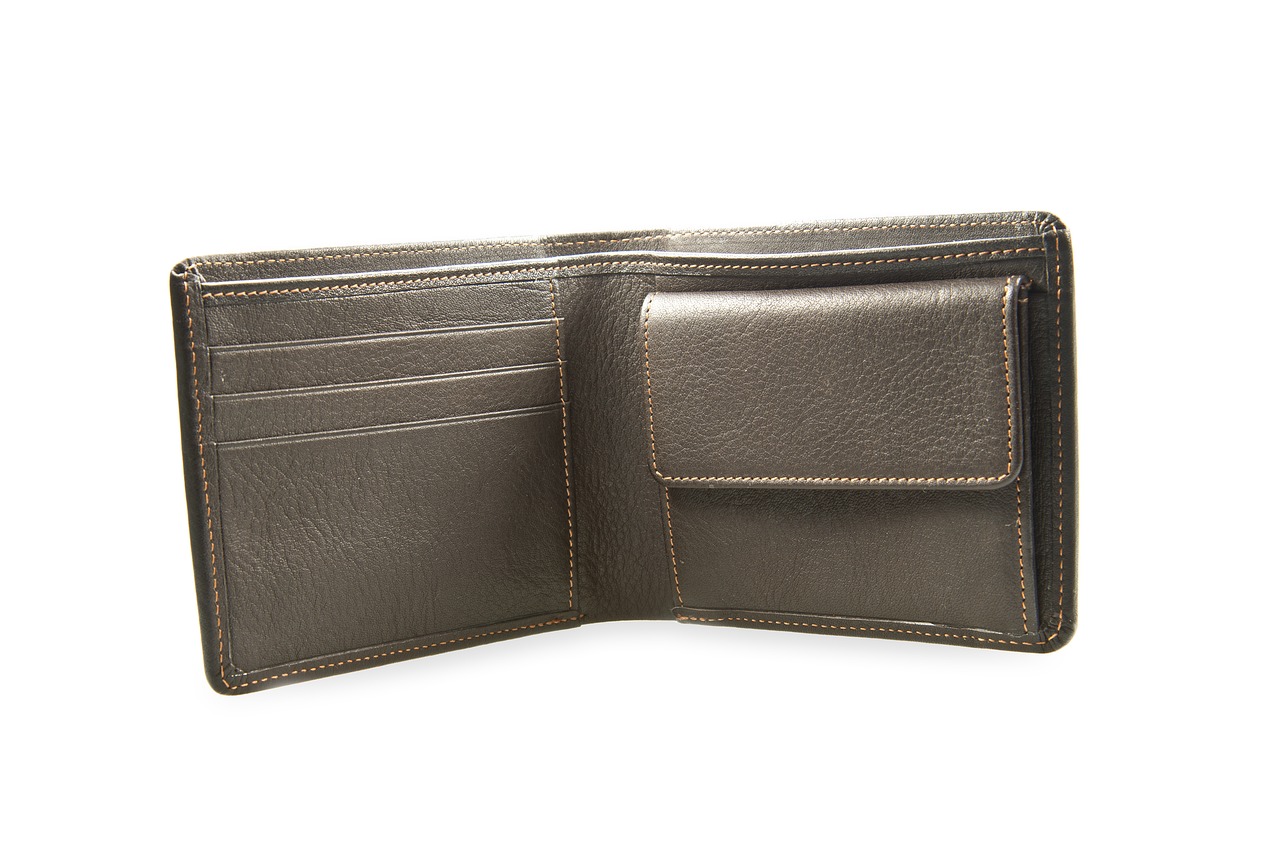
Aesthetic Appeal
The visual design of a digital wallet is more than just a pretty interface; it can be the defining factor that influences user adoption rates. Imagine walking into a store and being drawn to a beautifully crafted product, even if you weren’t initially looking for it. The same principle applies to digital wallets. A wallet that captivates users with its stunning aesthetics is far more likely to be downloaded and used. This is because, in our fast-paced world, people are not just looking for functionality; they are also seeking an experience that resonates with their personal style and identity.
When it comes to aesthetic appeal, several key elements come into play:
- Color Schemes: The right colors can evoke emotions and create a sense of trust. A wallet that uses a calm palette may instill a feeling of security, while vibrant colors could attract a younger audience.
- Typography: Fonts matter! Readable, modern typography can enhance user experience and make information easier to digest. An aesthetically pleasing font can make the wallet feel more approachable.
- Iconography: Well-designed icons can simplify navigation. Instead of overwhelming users with text, intuitive icons can guide them through the wallet's features effortlessly.
Moreover, the layout of the wallet plays a crucial role in its aesthetic appeal. A clean, organized interface allows users to find what they need without feeling lost in a sea of options. Think of it like a well-arranged kitchen; everything has its place, making it easy to whip up a meal. Similarly, a digital wallet that prioritizes layout can make transactions feel seamless and enjoyable.
In essence, a visually appealing wallet does not just attract users; it keeps them engaged. When users feel that a product is designed with care, they are more likely to trust it and, in turn, adopt it into their daily lives. This emotional connection can lead to increased usage and even brand loyalty. After all, who doesn’t want to show off a wallet that looks as good as it functions?
As the digital landscape continues to evolve, wallets that prioritize aesthetic appeal alongside functionality will stand out in a crowded marketplace. In a world where first impressions matter, the design of a wallet can be the difference between a fleeting glance and a committed user.
Q1: Why is aesthetic appeal important for digital wallets?
A1: Aesthetic appeal is crucial because it attracts users, enhances user experience, and fosters trust. A visually appealing wallet can make a lasting impression, encouraging users to adopt it.
Q2: How can I determine if a wallet's design is user-friendly?
A2: Look for features like intuitive navigation, clear typography, and a clean layout. User reviews and feedback can also provide insights into the wallet's usability.
Q3: Can a wallet's design influence my perception of its security?
A3: Absolutely! A well-designed wallet that uses trustworthy colors and icons can enhance users' perceptions of its security, making them more likely to adopt it.
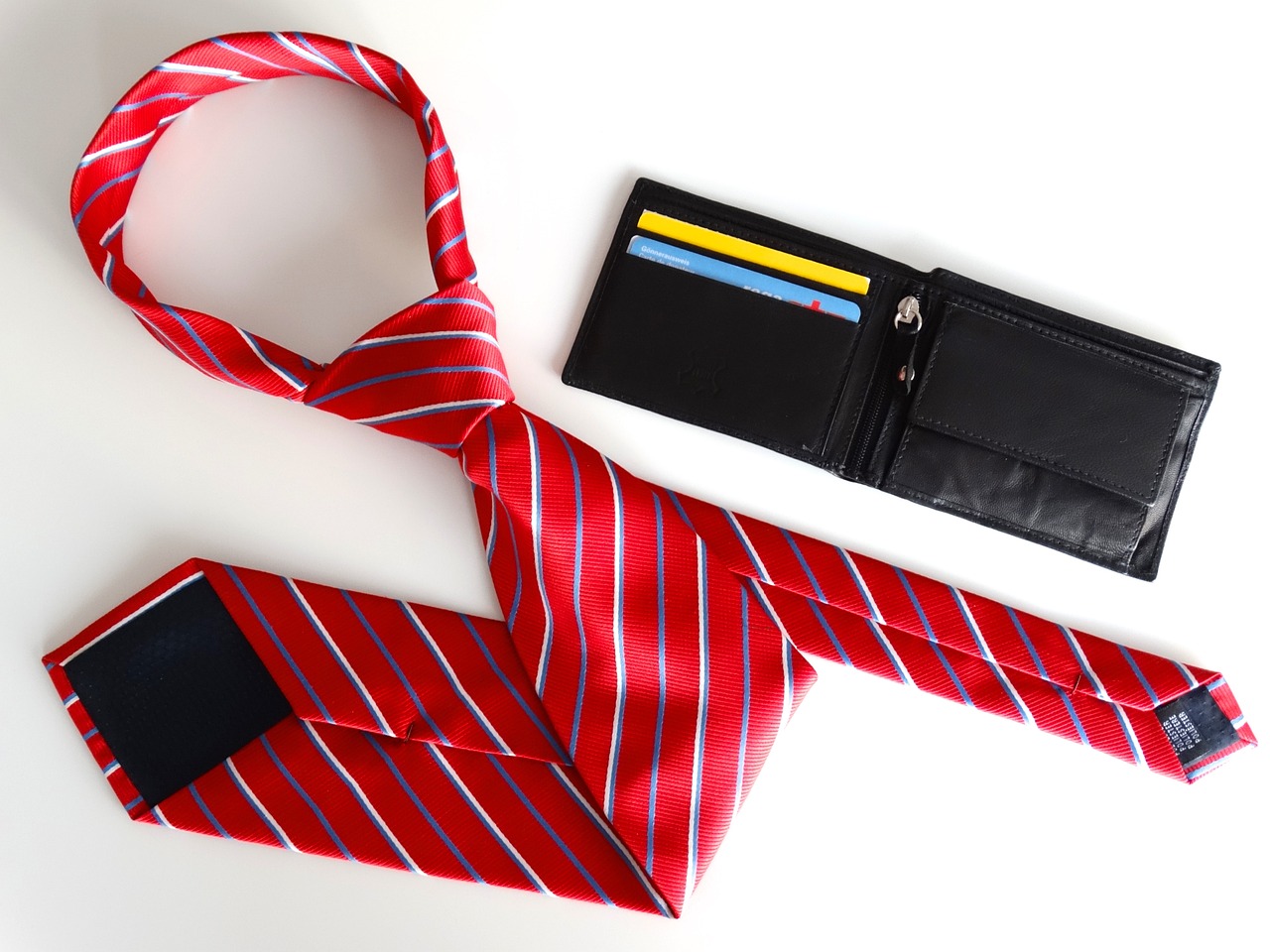
Security Features
When it comes to digital wallets, are not just an option; they are a fundamental necessity. Imagine handing over your hard-earned money to a stranger—this is how users feel when they consider adopting a digital wallet that lacks robust security measures. In today’s digital age, where cyber threats lurk at every corner, wallets must prioritize user safety above all else. Effective security features can significantly influence user adoption rates, as individuals are more likely to embrace a product that offers peace of mind.
One of the most critical aspects of wallet security is encryption. This technology scrambles user data, making it nearly impossible for unauthorized parties to access sensitive information. Wallets that utilize advanced encryption protocols, such as AES (Advanced Encryption Standard), can assure users that their financial data is well-protected. Moreover, incorporating multi-factor authentication (MFA) adds an additional layer of security. By requiring users to verify their identity through multiple methods—like a password and a fingerprint scan—wallets can greatly reduce the risk of unauthorized access.
Another essential feature is transaction monitoring. Wallets that provide real-time alerts for suspicious activities empower users to take immediate action if they notice anything unusual. This proactive approach not only enhances security but also builds user trust. Additionally, the inclusion of features like biometric authentication, which uses unique physical characteristics (like fingerprints or facial recognition), can make accessing the wallet both secure and convenient.
To illustrate the importance of these features, consider the following table that compares wallets based on their security measures:
| Wallet Name | Encryption | Multi-Factor Authentication | Transaction Monitoring | Biometric Authentication |
|---|---|---|---|---|
| Wallet A | AES-256 | Yes | Real-Time Alerts | Yes |
| Wallet B | RSA | No | Daily Summaries | No |
| Wallet C | AES-128 | Yes | Real-Time Alerts | Yes |
As seen in the table, Wallet A stands out with its comprehensive security features, making it a more appealing choice for users who prioritize safety. In contrast, Wallet B lacks essential security measures, which could be a dealbreaker for potential users. This highlights how security features not only protect users but also serve as a marketing point to attract new customers.
Ultimately, users want to feel that their money is safe, and wallets that effectively communicate their security measures can foster a sense of trust. The more transparent a wallet is about its security protocols, the more likely users are to adopt it. In a world where digital transactions are becoming the norm, the significance of strong security features cannot be overstated. It’s the difference between a wallet that users hesitate to adopt and one that they embrace wholeheartedly.
- What are the most important security features in a digital wallet?
The most important security features include encryption, multi-factor authentication, transaction monitoring, and biometric authentication.
- How does encryption protect my data?
Encryption scrambles your data, making it unreadable to unauthorized users, thus keeping your financial information safe.
- Why is multi-factor authentication important?
Multi-factor authentication adds an extra layer of security by requiring additional verification methods, which reduces the risk of unauthorized access.
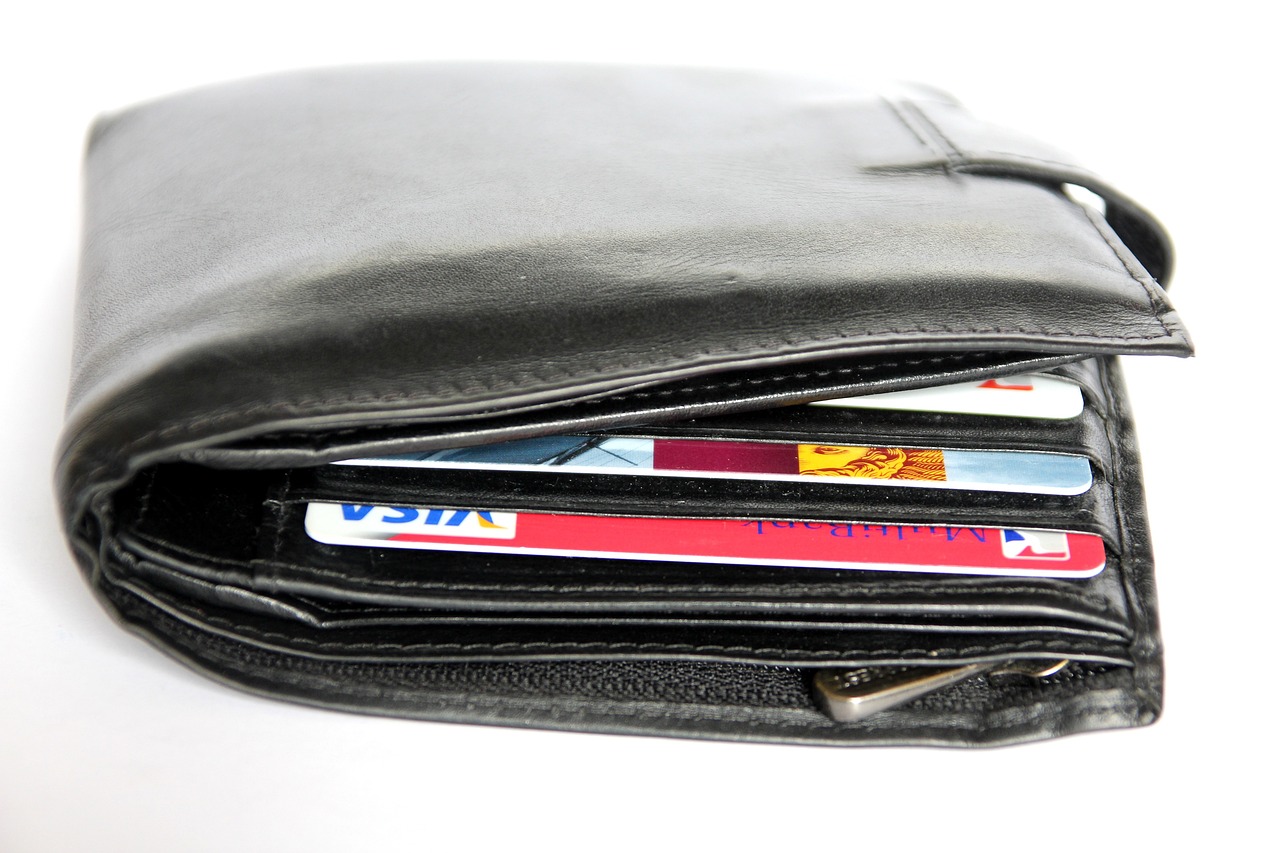
Customization Options
When it comes to digital wallets, are not just a luxury; they're a necessity. Imagine walking into a store where every item is identical—how boring would that be? The same principle applies to digital wallets. Users crave personalization, and wallets that offer a variety of customization features are more likely to see higher adoption rates. This is because when users can tailor their wallets to reflect their unique style and preferences, they feel a sense of ownership and connection to the product.
Customization can take many forms, from visual themes and color schemes to layout options and functional features. For instance, some wallets allow users to choose their preferred interface colors or even upload personal images to be used as backgrounds. This level of personalization not only makes the wallet more visually appealing but also enhances the overall user experience, making it feel more like a personal tool rather than a generic application.
Furthermore, customization options can also extend to functionality. Users may appreciate the ability to rearrange features according to their usage habits or to enable and disable certain functionalities that they find unnecessary. For example, a user who frequently makes payments might want quick access to that feature, while someone who primarily uses the wallet for storing loyalty cards may prefer a layout that emphasizes that function. This flexibility in design can significantly enhance user satisfaction.
To illustrate the importance of customization, consider the following table that compares user engagement between wallets with and without customization options:
| Wallet Type | User Engagement Rate | Adoption Rate |
|---|---|---|
| Standard Wallet | 45% | 30% |
| Customizable Wallet | 75% | 55% |
The data clearly shows that wallets offering customization options not only engage users more effectively but also encourage a higher adoption rate. This is a clear indication that users are more likely to embrace a product that they can make their own.
In conclusion, customization options are a game-changer in the world of digital wallets. They allow users to express their individuality while also enhancing usability. As the digital landscape continues to evolve, wallets that prioritize personalization will undoubtedly stand out, attracting a wider audience eager for a tailored experience. After all, who doesn’t want a wallet that feels just right for them?
- What are customization options in digital wallets?
Customization options refer to the features that allow users to personalize their digital wallets, including visual themes, layout adjustments, and functional preferences.
- Why are customization options important?
They enhance user engagement and satisfaction, leading to higher adoption rates as users feel a sense of ownership over their wallets.
- How can I customize my digital wallet?
Customization methods vary by wallet, but typically you can change themes, rearrange features, and select which functionalities to display.

Integration with Other Services
This article explores how wallet design influences user adoption rates, examining factors such as usability, aesthetics, and security features that contribute to a successful wallet experience.
The design's usability plays a crucial role in user adoption. A seamless user experience can significantly enhance user satisfaction and encourage more individuals to adopt a digital wallet.
The visual design of a wallet can attract users. Aesthetically pleasing interfaces may lead to higher adoption rates as users are more likely to engage with visually appealing products.
Security is paramount in wallet design. Users prioritize safety, and wallets that effectively communicate their security measures can foster trust and lead to increased adoption rates.
Offering customization options can enhance user engagement. Wallets that allow users to personalize their experience may see higher adoption rates due to increased user satisfaction and ownership.
In today's fast-paced digital world, the integration of wallets with other services is not just a luxury; it's a necessity. Imagine a wallet that not only stores your payment information but also syncs seamlessly with your favorite shopping apps, loyalty programs, and even your bank accounts. This level of connectivity can drastically improve user experience and satisfaction. When wallets can communicate with various platforms, they become multifunctional tools that cater to a user's diverse needs.
For instance, a digital wallet that integrates with ride-sharing services allows users to pay for their rides directly from the app, eliminating the need for multiple payment methods. Similarly, wallets that connect with e-commerce platforms enable users to make purchases in just a few taps, enhancing convenience and encouraging frequent use. This kind of integration not only streamlines the payment process but also fosters a sense of loyalty among users, as they appreciate the ease and efficiency brought by such features.
Moreover, the ability to link a digital wallet with budgeting tools can provide users with valuable insights into their spending habits. Imagine receiving notifications about your spending patterns or alerts when you're nearing a budget limit—all from your wallet app! This integration can empower users to make informed financial decisions, further solidifying their reliance on the wallet.
Ultimately, wallets that offer robust integration with other services are more likely to attract users. They provide a comprehensive ecosystem that meets various needs, making them indispensable in everyday life. As users seek convenience and efficiency, wallets that adapt and integrate with their lifestyles will undoubtedly see higher adoption rates.
With the rise of mobile usage, wallet designs must prioritize mobile compatibility. A wallet that functions well on mobile devices can attract a broader user base and facilitate higher adoption rates.
A strong brand reputation can influence user adoption. Wallets associated with reputable brands are often more trusted, leading to increased user confidence and willingness to adopt.
Providing adequate user education and support is essential. Wallets that offer comprehensive resources and assistance can enhance user understanding, leading to higher adoption rates among potential users.
Understanding current market trends and user preferences is vital. Wallet designs that align with evolving consumer demands are more likely to achieve successful adoption rates in a competitive landscape.
- What is the most important feature of a digital wallet?
The most important feature is usability, which significantly affects user adoption rates. - How does aesthetic appeal influence user adoption?
A visually appealing wallet can attract users and encourage them to engage more with the product. - Why is security crucial in wallet design?
Users prioritize safety, and effective security measures foster trust, leading to increased adoption rates. - How can customization options enhance user engagement?
Personalization allows users to tailor their experience, resulting in greater satisfaction and ownership. - What role does integration with other services play?
Integration enhances convenience and functionality, making wallets more appealing and increasing user adoption.
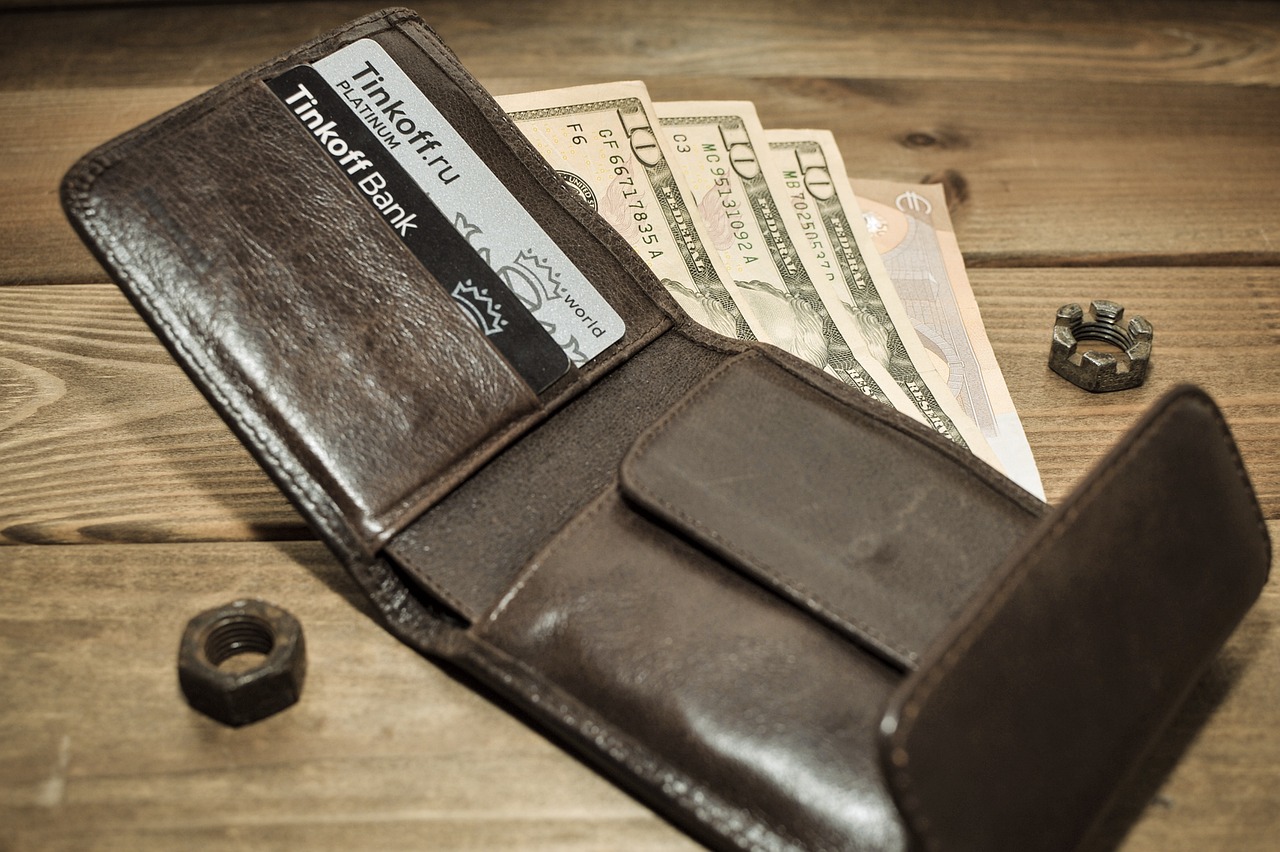
Mobile Compatibility
In today's fast-paced digital world, is not just a feature; it's a necessity. With the increasing reliance on smartphones and tablets for everyday transactions, a wallet that functions seamlessly on mobile devices can significantly influence user adoption rates. Imagine trying to navigate a clunky, non-responsive wallet app on your phone—frustrating, right? Users want a smooth, intuitive experience that allows them to manage their finances on the go.
When designing a mobile wallet, developers must prioritize responsive design, ensuring that the app adapts to various screen sizes and orientations. This means that whether a user is holding their phone vertically or horizontally, the wallet should display perfectly without any awkward scrolling or zooming. Additionally, incorporating touch gestures, such as swiping and tapping, can enhance the user experience, making interactions feel more natural and fluid.
Furthermore, it's essential to consider the speed of the app. Users expect instant access to their funds and quick transaction processing. A wallet that lags or crashes can quickly lead to dissatisfaction and abandonment. Therefore, optimizing the app's performance is crucial. This includes minimizing load times, ensuring smooth transitions between screens, and reducing the overall app size without sacrificing functionality.
Another critical aspect of mobile compatibility is security. Given the sensitive nature of financial transactions, users need to feel assured that their information is secure. Implementing features such as biometric authentication (fingerprint or facial recognition) can significantly enhance security while also providing a convenient way to access the wallet. When users see that a wallet prioritizes their safety, they are more likely to adopt it.
Moreover, integrating features that allow users to manage their wallets easily can also boost adoption rates. For instance, enabling users to link their digital wallets with other financial services—like banks, payment systems, and loyalty programs—can create a more comprehensive experience. This integration not only adds value but also makes the wallet a one-stop solution for various financial needs, driving more users to adopt the technology.
In conclusion, mobile compatibility is a cornerstone of successful wallet design. By focusing on responsive design, performance, security, and integration with other services, developers can create wallets that not only attract users but also retain them. As the digital landscape continues to evolve, wallets that embrace these principles will undoubtedly thrive in a competitive market.
- Why is mobile compatibility important for wallet adoption?
Mobile compatibility ensures that users can access and manage their wallets easily from their smartphones, which is crucial in today's mobile-centric world. - What features enhance mobile wallet usability?
Responsive design, quick load times, and intuitive navigation are key features that enhance usability. - How can security be improved in mobile wallets?
Implementing biometric authentication and encryption can significantly improve security in mobile wallets. - What role does integration with other services play?
Integrating with banks and payment systems can provide added convenience and value, encouraging more users to adopt the wallet.

Brand Reputation
When it comes to digital wallets, plays a pivotal role in influencing user adoption rates. Imagine walking into a store where the brand has a stellar reputation; you’re likely to feel more comfortable making a purchase, right? The same principle applies to digital wallets. Users are more inclined to trust and adopt wallets that are associated with reputable brands. This trust is not merely a matter of preference; it significantly impacts user behavior and decision-making.
Trustworthy brands often have established credibility in the market, which can lead to increased user confidence. For instance, if a wallet is backed by a well-known financial institution or a tech giant, potential users are more likely to perceive it as secure and reliable. This perception can be the difference between a user choosing to adopt a wallet or opting for a competitor. In fact, studies have shown that consumers are willing to pay a premium for products from brands they trust, and digital wallets are no exception.
Furthermore, a strong brand reputation can enhance user loyalty. When users feel confident in a wallet's brand, they are more likely to recommend it to others, creating a ripple effect. Word-of-mouth recommendations can be incredibly powerful in the digital space, where users often rely on their social circles for advice. Brands that prioritize their reputation often invest in customer service and user support, ensuring that any issues are addressed promptly. This commitment can lead to positive reviews and testimonials, further solidifying the brand's standing in the eyes of potential users.
To illustrate the impact of brand reputation on user adoption, consider the following table that compares adoption rates of wallets from various brands:
| Brand | Adoption Rate (%) | Reputation Score (1-10) |
|---|---|---|
| Brand A | 75 | 9 |
| Brand B | 60 | 7 |
| Brand C | 45 | 5 |
As the data suggests, there is a clear correlation between brand reputation and user adoption rates. Brand A, with a high reputation score, boasts the highest adoption rate, while Brand C, with a lower reputation, struggles to attract users. This pattern highlights the importance of brand perception in the competitive landscape of digital wallets.
In conclusion, as users navigate through their options, the reputation of a wallet brand can serve as a guiding light, steering them toward choices that align with their values of security and trust. Brands that actively manage their reputation through transparency, quality service, and positive user experiences are likely to see higher adoption rates. In a world where options are abundant, a strong brand reputation can make all the difference.
- Why is brand reputation important for digital wallets?
Brand reputation influences user trust and confidence, which are crucial for adoption. - How can a brand improve its reputation?
Brands can improve their reputation by providing excellent customer service, ensuring security, and maintaining transparency. - Do users prefer wallets from well-known brands?
Yes, users often gravitate toward wallets associated with reputable brands due to perceived security and reliability.

User Education and Support
User education and support are pivotal in the world of digital wallets. Imagine walking into a new store and not knowing where to find the items you need. Frustrating, right? Now, think of that same feeling when someone tries to use a digital wallet for the first time without any guidance. Providing comprehensive educational resources can transform that confusion into confidence. A well-informed user is not just likely to adopt a wallet; they’re more likely to recommend it to others. When users understand how the wallet works, its features, and the benefits it offers, they feel empowered to utilize it effectively.
One effective approach to user education is the inclusion of tutorials and guides within the wallet application itself. These can take the form of short videos, step-by-step instructions, or interactive walkthroughs that help users familiarize themselves with the wallet’s functionalities. For instance, a user might benefit from a tutorial on how to link their bank account or how to make secure transactions. This kind of support not only enhances the user experience but also builds trust in the wallet's capabilities.
Moreover, offering a robust customer support system can significantly enhance user satisfaction. Imagine having a question about a feature and getting instant assistance. Wallets that provide multiple support channels—such as live chat, email, and phone support—tend to foster a sense of security among users. They know that help is just a click or a call away, making them more likely to adopt the wallet. Additionally, a well-structured FAQ section can address common concerns, reducing the need for users to reach out for support.
Here’s a quick overview of effective user education strategies:
- Tutorials and Guides: Incorporate easy-to-follow resources within the app.
- Customer Support: Offer multiple channels for assistance, ensuring users can get help whenever they need it.
- FAQs: Maintain a comprehensive FAQ section to address common queries and concerns.
Ultimately, the more users understand how to navigate their digital wallets, the more likely they are to embrace them fully. By prioritizing user education and support, wallet providers can create a positive feedback loop—satisfied users lead to higher adoption rates, which in turn encourages further investment in educational resources. It’s a win-win scenario that enhances the entire digital wallet ecosystem.
| Question | Answer |
|---|---|
| What is a digital wallet? | A digital wallet is an electronic application that allows users to store and manage their payment information and make transactions online or in physical stores. |
| How do I secure my digital wallet? | Always use strong passwords, enable two-factor authentication, and keep your software up to date to enhance security. |
| Can I use my digital wallet internationally? | Many digital wallets support international transactions, but it’s essential to check with your wallet provider for specific details. |
| What should I do if I forget my password? | Most wallets have a password recovery option. Follow the instructions provided to reset your password securely. |

Market Trends and User Preferences
This article explores how wallet design influences user adoption rates, examining factors such as usability, aesthetics, and security features that contribute to a successful wallet experience.
The design's usability plays a crucial role in user adoption. A seamless user experience can significantly enhance user satisfaction and encourage more individuals to adopt a digital wallet.
The visual design of a wallet can attract users. Aesthetically pleasing interfaces may lead to higher adoption rates as users are more likely to engage with visually appealing products.
Security is paramount in wallet design. Users prioritize safety, and wallets that effectively communicate their security measures can foster trust and lead to increased adoption rates.
Offering customization options can enhance user engagement. Wallets that allow users to personalize their experience may see higher adoption rates due to increased user satisfaction and ownership.
Wallets that integrate seamlessly with other services provide added value. This convenience can significantly boost user adoption as individuals seek multifunctional solutions in their digital experiences.
With the rise of mobile usage, wallet designs must prioritize mobile compatibility. A wallet that functions well on mobile devices can attract a broader user base and facilitate higher adoption rates.
A strong brand reputation can influence user adoption. Wallets associated with reputable brands are often more trusted, leading to increased user confidence and willingness to adopt.
Providing adequate user education and support is essential. Wallets that offer comprehensive resources and assistance can enhance user understanding, leading to higher adoption rates among potential users.
Understanding current market trends and user preferences is vital in the competitive landscape of digital wallets. As technology evolves, so do the expectations of users. Today's consumers are not just looking for functionality; they want a wallet that resonates with their lifestyle and values. For instance, the rise of contactless payments has shifted user preferences towards wallets that support quick and easy transactions. This trend is particularly evident among younger demographics who prioritize speed and convenience in their financial interactions.
Furthermore, users are increasingly concerned about privacy and data security. Wallets that emphasize their commitment to protecting user information are likely to gain traction. A study conducted by XYZ Research highlighted that 70% of users are more inclined to adopt a digital wallet if it clearly communicates its security protocols. This data underscores the importance of transparency in building user trust.
Additionally, sustainability is becoming a focal point for many consumers. Users are more inclined to choose wallets that demonstrate eco-friendly practices, such as using sustainable materials or supporting green initiatives. According to ABC Analytics, wallets that incorporate sustainable design elements can see a significant boost in user adoption rates, particularly among environmentally conscious consumers.
To better illustrate these trends, the following table summarizes key market trends influencing user preferences:
| Trend | Description | Impact on User Adoption |
|---|---|---|
| Contactless Payments | Growing preference for fast, tap-to-pay options. | Higher adoption due to convenience. |
| Data Security | Increased focus on privacy and protection. | Trust leads to higher adoption rates. |
| Sustainability | Demand for eco-friendly wallet options. | Attracts environmentally conscious users. |
In conclusion, the landscape of digital wallets is continuously evolving. To remain competitive, wallet designers must not only keep an eye on emerging trends but also adapt to changing user preferences. By doing so, they can create a wallet experience that not only meets user needs but also fosters loyalty and long-term adoption.
- What are the key factors that influence wallet adoption rates? Usability, aesthetic appeal, security features, and brand reputation are among the most significant factors.
- How important is mobile compatibility for digital wallets? Extremely important, as a large portion of users rely on mobile devices for transactions.
- Can customization options impact user satisfaction? Yes, allowing users to personalize their wallets can lead to higher satisfaction and loyalty.
- What role does user education play in wallet adoption? Comprehensive user education can enhance understanding and encourage more users to adopt digital wallets.
Frequently Asked Questions
- What factors influence user adoption rates for digital wallets?
User adoption rates for digital wallets are influenced by several key factors including usability, aesthetic appeal, security features, and customization options. A wallet that is easy to use, visually appealing, and offers robust security measures is more likely to attract users. Additionally, allowing users to personalize their experience can lead to greater satisfaction and, consequently, higher adoption rates.
- How important is the aesthetic design of a wallet?
The aesthetic design of a wallet is extremely important! Just like a good book cover can draw you in, a visually appealing wallet can capture a user's attention and encourage them to engage with the product. If a wallet looks good and feels modern, users are more likely to adopt it compared to a bland or outdated design.
- What security features should users look for in a digital wallet?
Users should look for features such as encryption, two-factor authentication, and biometric security. These features help ensure that their financial information is protected. A wallet that clearly communicates its security measures can foster trust, making users feel safer about adopting the technology.
- Can customization options affect user satisfaction?
Absolutely! Customization options can significantly enhance user satisfaction. When users can tailor their wallet experience to their preferences—like changing themes, layouts, or functionalities—they feel a sense of ownership and connection to the product, which can lead to higher adoption rates.
- How does integration with other services impact user adoption?
Integration with other services is a game-changer. A wallet that works seamlessly with payment platforms, loyalty programs, or even social media can provide added convenience for users. This multifunctionality makes the wallet more appealing, as it simplifies their digital experience and encourages adoption.
- Why is mobile compatibility crucial for wallet design?
With the explosion of mobile device usage, mobile compatibility is non-negotiable. If a wallet doesn't function well on smartphones or tablets, it risks alienating a huge segment of potential users. A wallet that is optimized for mobile use can attract a broader audience and ultimately lead to higher adoption rates.
- Does brand reputation influence the choice of a digital wallet?
Yes, brand reputation plays a significant role in user adoption. Consumers are more likely to trust wallets associated with reputable brands because they often feel more secure knowing that a recognized entity backs the product. This trust can lead to increased confidence and willingness to adopt the wallet.
- What role does user education play in wallet adoption?
User education is key! Wallets that provide comprehensive resources, tutorials, and customer support help users understand how to use the product effectively. This knowledge can reduce apprehension and enhance user confidence, leading to higher adoption rates among potential users.
- How can market trends affect wallet design and adoption?
Market trends can greatly influence wallet design. Keeping an eye on evolving consumer demands and preferences allows developers to create wallets that resonate with users. A wallet that aligns with current trends—be it in design, functionality, or security—has a better chance of achieving successful adoption rates in a competitive landscape.

